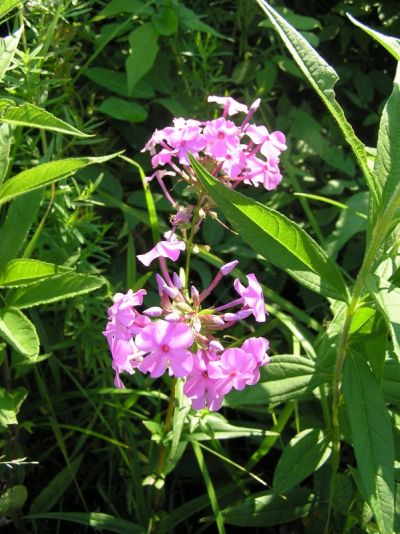
Dame’s Rocket is blooming now along roadsides and trails in Pennsylvania. A native of Eurasia it was brought to America in the 1600’s and went wild long ago. It’s now considered invasive in many states including Pennsylvania, New Jersey, West Virginia and Maryland.
Dame’s Rocket is easy to find. It’s seed production is prolific and it tends to grow in dense stands. The flowers are showy and produce a particularly sweet scent in the evening.
Though we shouldn’t plant it in our gardens it sure is beautiful. I can see why the colonists brought it here.
(photo by Dianne Machesney)
Everyone thinks these are PHLOX, but they aren’t. I have some in the yard and keep things under control by cutting the seed heads off before they mature. They are great attractors for bees, butterflies and hummers, even though they are invasive. Plus they are some of the first color of the early summer before the perennials begin to bloom.
Marcy, you make a good point. If you don’t let the seeds disperse they can’t “invade.”
Also, an easy way to tell the difference between Dame’s Rocket and Phlox is that Dame’s Rocket has four-petaled flowers, Phlox has five.
Thanks for publishing this. I have to look more carefully at the flowers in the park next to my house. I always thought they were phlox but maybe they are Dame’s Rocket.
I don’t know about the philosophy of growing things that are invasive and counting on the practice of cutting off the seed heads to prevent the spread of the plant. I heard a few years ago that someone in Washington County does this with Giant Hog Weed…I guess it hasn’t spread yet, but in my mind this plant is so dangerous that it should not be allowed to be grown at all, even if the person promises to cut the seed heads off. At least Dame’s Rocket is pretty and has a nice scent, and isn’t dangerous (as far as I know). I guess it still might crowd out native flowers.
Invasives that annoy me are Japanese Honeysuckle bushes (a number have sprung up in my yard), and crown vetch, which was designed to be aggressive, but woe to anyone (like me) who lives next to a hillside where it was planted to stabilize the soil.